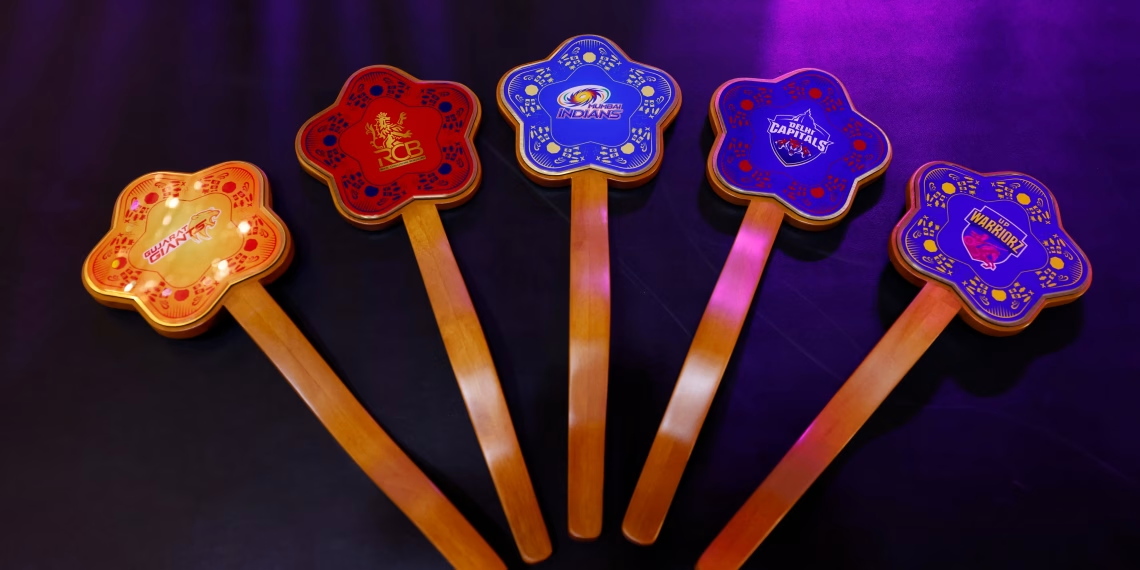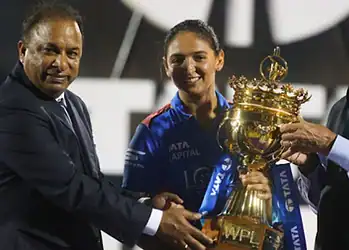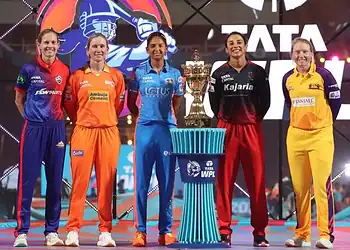The Women’s Premier League took a historic step forward on November 27, 2025, with its first-ever mega auction held in New Delhi. This landmark event reshaped all five franchises as teams rebuilt their squads from near scratch, with 277 players going under the hammer for 73 available slots. Coming just weeks after India’s triumphant 2025 ODI World Cup victory, the auction saw record-breaking deals and surprising outcomes that will define the upcoming season.
Table of Contents
WPL 2026 Mega Auction Date and Venue
The inaugural WPL 2026 mega auction took place on November 27, 2025, at a five-star hotel in Aerocity, New Delhi, starting at 3:30 PM IST. The Board of Control for Cricket in India selected New Delhi over Goa as the host city for this historic first mega auction since the league’s inception in 2023.
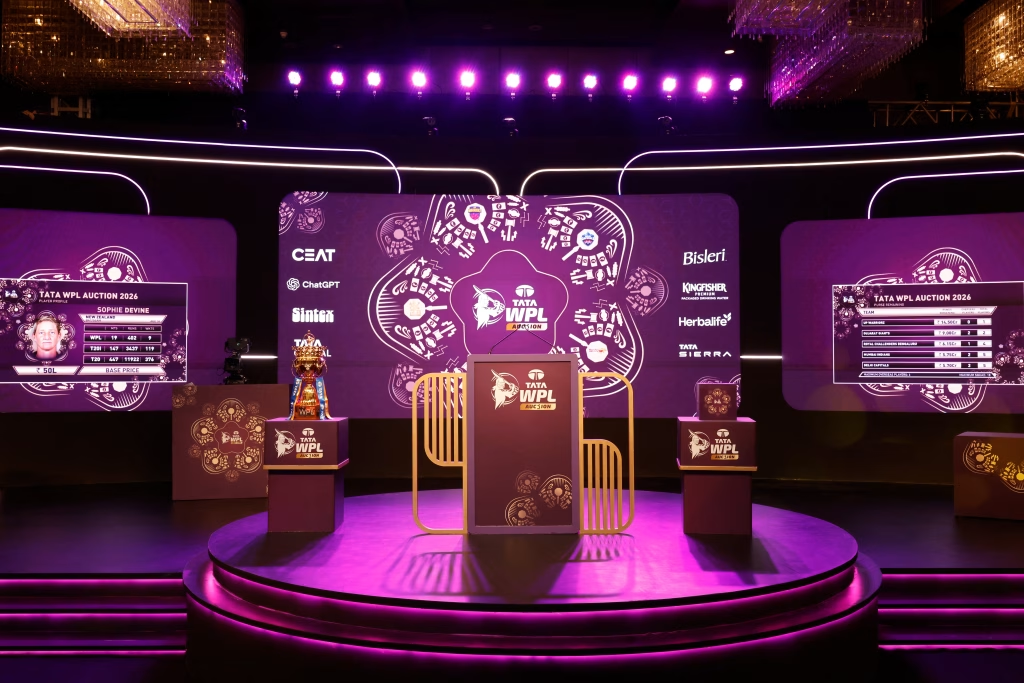
The event was broadcast live on JioHotstar through both its website and mobile app, with television coverage on Star Sports 1 Hindi (SD+HD), Star Sports 2 (SD+HD), and Star Sports 3. This ensured fans across India could witness the drama unfold as franchises competed to build championship-winning squads.
Understanding the WPL 2026 Mega Auction Rules
The auction introduced several new dynamics compared to previous seasons, most notably the Right to Match cards that allowed teams strategic flexibility in rebuilding their rosters.
Salary Cap and Squad Composition
Each franchise entered with a total purse of ₹15 crore to assemble their squads. Teams could build rosters of 15 to 18 players, with specific overseas limitations. Franchises were permitted to sign up to six overseas players, though only four could feature in the playing XI, with a fifth allowed if the player is from an Associate nation.
| WPL 2026 Auction Rules | Details |
|---|---|
| Total Purse | ₹15 crore per team |
| Squad Size | 15-18 players |
| Maximum Overseas Players | 6 (4 in playing XI) |
| Total Slots Available | 73 (50 Indians, 23 overseas) |
| Players in Auction | 277 (194 Indians, 83 overseas) |
Retention Rules and Price Slabs
Teams could retain up to five players before the auction, with specific restrictions: maximum three capped Indians, maximum two overseas players, and maximum two uncapped Indians. If a team retained five players, at least one had to be an uncapped Indian.
The retention price slabs were clearly defined: ₹3.5 crore for Player 1, ₹2.5 crore for Player 2, ₹1.75 crore for Player 3, ₹1 crore for Player 4, and ₹50 lakh for Player 5. Each uncapped player retained cost ₹50 lakh, though franchises were free to pay players more than the slab rate, with the excess deducted from their total purse.
The purse deduction based on retained players worked as follows: ₹9.25 crore for five players, ₹8.75 crore for four, ₹7.75 crore for three, ₹6 crore for two, and ₹3.5 crore for one.
Right to Match Cards
The 2026 auction marked the first time Right to Match cards appeared in the Women’s Premier League. These RTM cards allowed teams to repurchase a released player by matching the highest bid during the auction. The number of RTM cards available depended on how many players a team retained.
Teams retaining five players received no RTM cards. Royal Challengers Bengaluru, with four retentions, had one RTM card (usable only on an uncapped Indian). Gujarat Giants, with two retentions, had three RTM cards (restricted to Indian players only since they’d already retained two overseas players). UP Warriorz, retaining just one player, entered with the maximum four RTM cards.
Complete Retained Players List by Team
The retention window revealed contrasting strategies across franchises, with some prioritizing core stability while others opted for maximum auction flexibility.
Mumbai Indians – Maximum Retention Strategy
The defending champions retained their full quota of five players, ensuring continuity with their championship-winning core. Their retained list included Nat Sciver-Brunt, Harmanpreet Kaur, Hayley Matthews, Amanjot Kaur, and G Kamalini. This left Mumbai with ₹5.75 crore remaining purse and zero RTM cards, requiring them to buy at least 10 players to complete their squad.
Harmanpreet Kaur’s retention was particularly significant, having played 29 WPL matches with 689 runs at an average of 33.2 and 12 wickets. Nat Sciver-Brunt, with 632 runs at a strike rate of 130 and 20 wickets in 25 matches, represented Mumbai’s all-round strength.
Delhi Capitals – Core Continuity Approach
Delhi Capitals matched Mumbai’s strategy by retaining five players: Jemimah Rodrigues, Shafali Verma, Annabel Sutherland, Marizanne Kapp, and Niki Prasad. This left them with ₹5.70 crore (the smallest purse) and no RTM options, requiring strategic budget management during the auction.
Shafali Verma’s aggressive opening batting, having scored 615 runs in 24 games with 73 boundaries and 19 sixes, provided Delhi with powerplay dominance. Jemimah Rodrigues brought middle-order stability, while Marizanne Kapp offered world-class all-round capabilities.
Royal Challengers Bengaluru – Balanced Retention
The 2024 champions retained four players: Smriti Mandhana, Richa Ghosh, Shreyanka Patil, and Ellyse Perry. This strategic choice left RCB with ₹6.25 crore and one RTM card (usable only on an uncapped Indian player). The retention of Smriti Mandhana at ₹3.4 crore maintained continuity with the league’s highest-paid player.
Richa Ghosh’s explosive batting (210 runs with high strike rate) and reliable wicketkeeping bolstered RCB’s finishing strength. Shreyanka Patil emerged as a dependable spin bowler with 19 wickets in 18 matches, controlling crucial middle overs.
Gujarat Giants – Rebuild Mode
Gujarat Giants opted for minimal retention, keeping only Ashleigh Gardner and Beth Mooney. This bold strategy provided them with ₹9 crore purse and three RTM cards (restricted to Indian players). Gardner’s all-round prowess (334 runs and 25 wickets in 23 matches) and Mooney’s opening consistency (470 runs in 19 matches) formed the foundation for their rebuild.
UP Warriorz – Maximum Flexibility Strategy
In the most surprising retention decision, UP Warriorz retained just one player: uncapped batter Shweta Sehrawat for ₹50 lakh. This aggressive approach gave them the auction’s largest purse at ₹14.5 crore and four RTM cards, providing maximum flexibility to build an entirely new squad.
The decision to release former captain Deepti Sharma, who had captained the team in Alyssa Healy’s absence, shocked many observers but proved strategic as they successfully used RTM to bring her back at auction.
| Team | Retained Players | Purse Remaining | RTM Cards |
|---|---|---|---|
| UP Warriorz | 1 | ₹14.50 crore | 4 |
| Gujarat Giants | 2 | ₹9.00 crore | 3 (Indian only) |
| RCB | 4 | ₹6.25 crore | 1 (uncapped) |
| Mumbai Indians | 5 | ₹5.75 crore | 0 |
| Delhi Capitals | 5 | ₹5.70 crore | 0 |
Marquee Players and Top Buys
The auction opened with the marquee set featuring eight headline players with ₹50 lakh base price: Deepti Sharma, Renuka Singh, Sophie Devine, Sophie Ecclestone, Alyssa Healy, Amelia Kerr, Meg Lanning, and Laura Wolvaardt. These World Cup heroes commanded significant attention following India’s historic ODI World Cup triumph.
Deepti Sharma – Auction’s Highest Earner
The standout moment came when Deepti Sharma became the auction’s most expensive player at ₹3.2 crore. Delhi Capitals opened bidding at her ₹50 lakh base price with no other franchises competing. When DC raised their offer to ₹3.2 crore, UP Warriorz exercised their RTM card to bring back their former captain.
This deal made Deepti the joint second-most expensive player in WPL history alongside Ashleigh Gardner and Nat Sciver-Brunt (both at ₹3.2 crore from 2023), with only Smriti Mandhana’s ₹3.4 crore retention standing higher. Deepti’s performance as Player of the Tournament at the 2025 World Cup, claiming 22 wickets as the leading wicket-taker plus 215 runs including three half-centuries, justified the premium investment.
Amelia Kerr – Mumbai’s Big Splash
New Zealand all-rounder Amelia Kerr fetched ₹3 crore from Mumbai Indians in an intense bidding war with UP Warriorz. The bid quickly escalated past ₹2 crore as both franchises recognized her match-winning capabilities. Mumbai ultimately secured her services, using 52% of their total remaining purse on this single acquisition.
Kerr’s WPL credentials backed the investment: 437 runs at a strike rate of 119.39 and 40 wickets at an economy rate of 7.64 in 29 matches. Her international record of 1,453 runs and 95 wickets in 88 T20Is demonstrated consistency across formats.
Sophie Devine – Gujarat’s Power Addition
Gujarat Giants won the bidding war for Sophie Devine at ₹2 crore, with RCB and DC also competing strongly. The former New Zealand captain brought wealth of experience from WBBL (116 wickets and 4,072 runs in 137 games), Women’s Hundred, and WCPL. Her WPL stats included 402 runs at a stunning strike rate of 153.43 with two fifties, plus nine wickets with her medium pace.
Meg Lanning – Leadership Acquisition
UP Warriorz secured legendary Australian captain Meg Lanning for ₹1.90 crore after a bidding battle with her former franchise Delhi Capitals. Lanning had led DC to three consecutive WPL finals but will now bring her championship pedigree to rebuild UP’s squad. Her WPL record of 952 runs in 27 matches at a strike rate of 127.10, including nine half-centuries, provided top-order stability and leadership credentials.
Notable RTM Successes
UP Warriorz strategically deployed all four RTM cards during the auction. Beyond Deepti Sharma, they brought back Sophie Ecclestone for ₹85 lakh, Kiran Navgire for ₹60 lakh, and Kranti Goud for ₹50 lakh. These RTM exercises allowed UP to maintain familiarity while adding significant firepower like Lanning, Phoebe Litchfield, and Shikha Pandey.
| Top 5 Most Expensive Players | Franchise | Price |
|---|---|---|
| Deepti Sharma | UP Warriorz (RTM) | ₹3.20 crore |
| Amelia Kerr | Mumbai Indians | ₹3.00 crore |
| Shikha Pandey | UP Warriorz | ₹2.40 crore |
| Sophie Devine | Gujarat Giants | ₹2.00 crore |
| Meg Lanning | UP Warriorz | ₹1.90 crore |
Shocking Unsold Players
The auction produced several stunning omissions as established international stars failed to attract bids.
Alyssa Healy – The Biggest Surprise
The most shocking moment came when Australian captain and wicketkeeper-batter Alyssa Healy went unsold despite being a marquee player. The six-time World Cup winner’s failure to receive a single bid stunned observers, particularly given her leadership qualities and explosive batting capabilities.
Healy had captained UP Warriorz in previous seasons before the team released her ahead of the auction. Her omission likely stemmed from recent injury concerns and UP’s strategic decision to pursue Meg Lanning for the leadership role.
Other Notable Unsold Players
Jess Jonassen pulled out at the last minute due to a shoulder injury, avoiding BCCI’s two-year ban for withdrawals (though the strict ban currently applies only to IPL, not WPL). Her medical exemption ensures eligibility for WPL 2027.
Several Indian players with ₹10 lakh base prices also went unsold, including Amandeep Kaur, Jagravi Pawar (RCB’s only uncapped RTM option), Parunika Sisodia, Priyanka Koushal, Komalpreet Kour, Nandini Sharma, and Happy Kumari.
Team-by-Team Auction Breakdown
UP Warriorz – Auction Winners
UP Warriorz executed arguably the auction’s most successful strategy, entering with ₹14.5 crore and emerging with a star-studded squad. Beyond the marquee signings of Deepti, Lanning, and Ecclestone, they invested heavily in Shikha Pandey (₹2.40 crore) despite her absence from the Indian setup, Australian Phoebe Litchfield (₹1.20 crore), and Indian leg-spinner Asha Sobhana (₹1.10 crore).

The franchise’s Director of Cricket Operations Abhishek Nayar explained their philosophy: “We have a big purse and we want to pick players who can add value to the team. The last three years haven’t been what we wanted. We wanted to change the outlook of the franchise. The idea is to try and pick players and win the championship.”
Their final squad included: Shweta Sehrawat, Deepti Sharma, Sophie Ecclestone, Meg Lanning, Phoebe Litchfield, Kiran Navgire, Harleen Deol, Kranti Goud, Asha Sobhana, Deandra Dottin, Shikha Pandey, Shipra Giri, Simran Shaikh, Tara Norris, Chloe Tryon, Suman Meena, G Trisha, and Pratika Rawal.
Mumbai Indians – Targeted Approach
With limited purse and no RTM options, Mumbai focused on strategic additions. Their ₹3 crore investment in Amelia Kerr reunited her with the franchise where she previously excelled.

They also brought back South African pacer Shabnim Ismail for ₹60 lakh and invested in Indian talent including S Sajana, Sanskriti Gupta (₹20 lakh), Triveni Vasistha, Poonam Khemnar, Rahila Firdous, Nicola Carey, Nalla Reddy, Milly Illingworth, and Saika Ishaque.
Delhi Capitals – Value Hunting
DC made shrewd value additions to complement their retained core. Laura Wolvaardt joined for ₹1.10 crore after a bidding war with RCB, representing a steal for someone of her caliber and providing leadership credentials after losing Meg Lanning.

West Indian all-rounder Chinelle Henry (₹1.30 crore) and uncapped Indian Shree Charani (₹1.30 crore) added depth, while Sneh Rana (₹50 lakh), Lizelle Lee (₹30 lakh), Deeya Yadav, Taniya Bhatia, Mamatha Madiwala, Nandani Sharma, Lucy Hamilton, and Minnu Mani completed their roster.
Royal Challengers Bengaluru – Smart Additions
The defending champions made calculated moves with limited resources. Australian opener Georgia Voll and South African all-rounder Nadine de Klerk (₹65 lakh) strengthened overseas quotas.
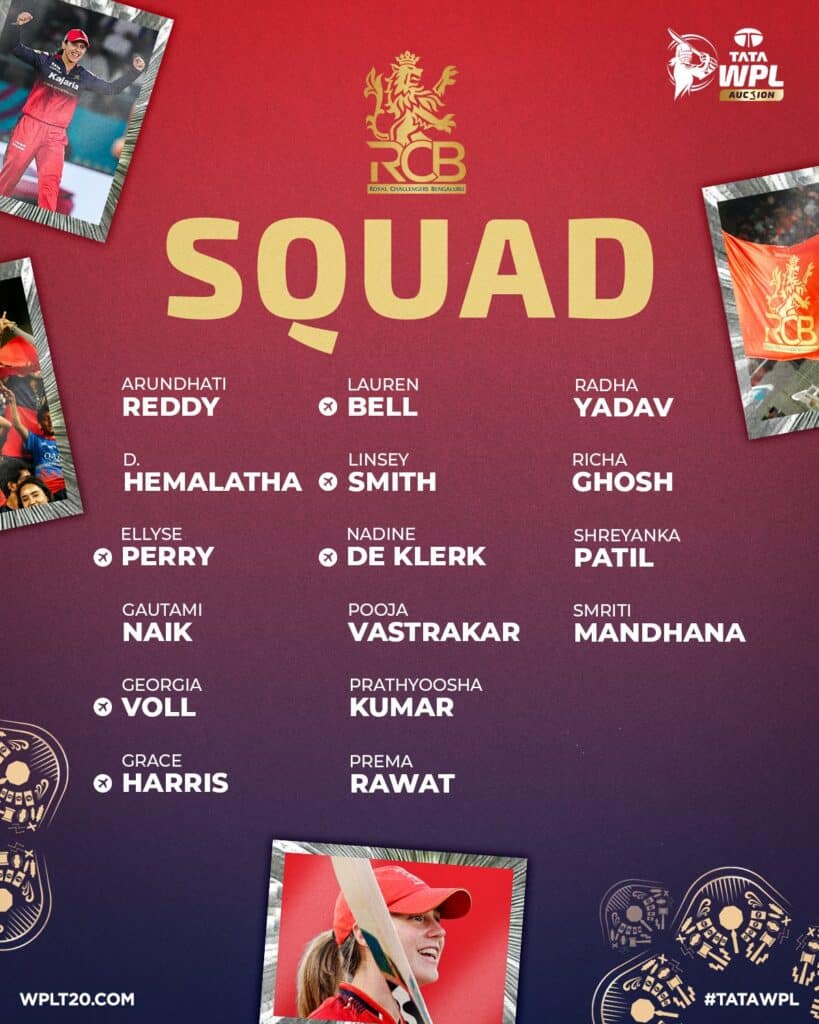
Indian pace duo Pooja Vastrakar (₹85 lakh) and Arundhati Reddy (₹75 lakh) bolstered the bowling attack, while Radha Yadav (₹65 lakh), Lauren Bell (₹90 lakh), Linsey Smith (₹30 lakh), Prema Rawat (₹20 lakh via RTM), Grace Harris, Gautami Naik, Prathyoosha Kumar, and D Hemalatha rounded out their squad.
Gujarat Giants – Fresh Start
Gujarat’s rebuild centered on power-hitting and pace. Beyond Sophie Devine, they secured Indian pacer Renuka Singh Thakur (₹60 lakh), used RTM for Bharti Fulmali (₹70 lakh), and added Titas Sadhu (₹30 lakh), Kashee Gautam, Kanika Ahuja, Tanuja Kanwer, Georgia Wareham, Yastika Bhatia, and Kim Garth to create an entirely new identity.

WPL 2026 Schedule and Format
WPL Chairperson Jayesh George announced the tournament dates and venues at the auction. The Women’s Premier League 2026 will run from January 9 to February 5, 2026, marking the first time the league moves to the January-February window. This advancement from the traditional February-March schedule accommodates the Men’s ICC T20 World Cup beginning February 7, 2026, co-hosted by India and Sri Lanka.
The tournament will follow a caravan model across two venues. The DY Patil Stadium in Navi Mumbai, where India recently won the Women’s ODI World Cup final, will host the opening match on January 9 and the first leg of the competition. The league will then move to the Kotambi Stadium in Vadodara, which will host the final on February 5.
This represents the first WPL season that won’t clash with any international fixtures, allowing all players maximum availability. The format continues with five teams playing each other twice in the league stage, totaling approximately 22 matches across four to five weeks. The top three teams after the league phase qualify for the knockout stage, with the table-topper advancing directly to the final while second and third place compete in an Eliminator to determine the other finalist.
Impact of India’s World Cup Win
The auction came just weeks after India’s historic 2025 ODI World Cup triumph, significantly impacting player valuations. Deepti Sharma’s Player of the Tournament award directly translated to her record-breaking auction price. Other World Cup heroes like Shree Charani (₹1.30 crore), Renuka Singh (₹60 lakh), and Harleen Deol (₹50 lakh) all benefited from their contributions to India’s maiden World Cup title.
The timing elevated Indian players’ market value while also highlighting the global nature of women’s cricket, with Australian, New Zealand, South African, West Indian, and English stars commanding premium prices based on both international and WPL performances.
What This Means for Women’s Premier League
The WPL 2026 mega auction signals the league’s maturation and growing commercial significance. ChatGPT joined as premier partner for WPL 2026-2027, with BCCI finalizing new agreements worth ₹48 crore, demonstrating increasing corporate interest in women’s franchise cricket.
The RTM mechanism added strategic depth while maintaining competitive balance. Teams unable to retain all desired players gained opportunities to reclaim them without blocking retention slots. UP Warriorz’s successful use of all four RTMs exemplified this strategic advantage.
The auction’s advancement to November from the traditional December slot reflected scheduling pressures and the league’s integration into the broader cricket calendar. With the tournament concluding by early February, players gain clearer pathways to international commitments, including India’s all-format Australia tour beginning February 15.
Mumbai Indians Women enter WPL 2026 as defending champions, having won titles in both 2023 and 2025. Royal Challengers Bengaluru claimed the 2024 crown, while Delhi Capitals remain the league’s unluckiest team, reaching three consecutive finals without lifting the trophy.
The mega auction reset competitive dynamics while preserving the league’s core identity. The combination of retained stars, strategic RTM usage, and smart auction acquisitions positions all five franchises to compete for the championship, ensuring another thrilling season of women’s franchise cricket in India.
FAQs
When and where was the WPL 2026 mega auction held?
The WPL 2026 mega auction was held on November 27, 2025, in New Delhi at a five-star hotel in Aerocity, starting at 3:30 PM IST. This was the first mega auction in Women’s Premier League history, featuring 277 players going under the hammer for 73 available slots.
Who was the most expensive player at the WPL 2026 auction?
Deepti Sharma became the most expensive player at ₹3.2 crore when UP Warriorz used their Right to Match card to bring her back after Delhi Capitals raised the bid. This made her the joint second-most expensive player in WPL history alongside Ashleigh Gardner and Nat Sciver-Brunt, with only Smriti Mandhana’s ₹3.4 crore retention standing higher.
How do Right to Match (RTM) cards work in the WPL auction?
RTM cards allow teams to repurchase a released player by matching the highest bid during the auction. The number of RTM cards depends on retentions: teams retaining 5 players get 0 RTMs, 4 players get 1 RTM, 3 players get 2 RTMs, 2 players get 3 RTMs, and 1 player gets 4 RTMs. UP Warriorz had the maximum 4 RTMs, which they used on Deepti Sharma, Sophie Ecclestone, Kiran Navgire, and Kranti Goud.
Which team had the biggest purse at the WPL 2026 auction?
UP Warriorz entered the auction with the biggest purse of ₹14.5 crore after retaining only one player (Shweta Sehrawat). This gave them maximum flexibility to rebuild their squad. Gujarat Giants had the second-largest purse at ₹9 crore, while Delhi Capitals had the smallest at ₹5.7 crore after retaining five players.
When does the WPL 2026 season start and where will it be played?
The WPL 2026 season starts on January 9, 2026, and concludes with the final on February 5, 2026. Matches will be played across two venues: DY Patil Stadium in Navi Mumbai (opening match and first leg) and Kotambi Stadium in Vadodara (second leg including the final). This is the first time WPL moves to the January-February window.

